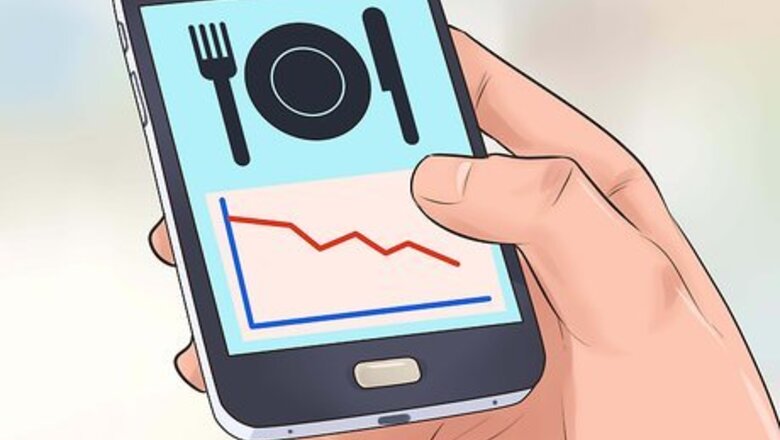
views
X
Trustworthy Source
Mayo Clinic
Educational website from one of the world's leading hospitals
Go to source
So even if you do not have enough time to exercise each week, making changes to your diet and lifestyle can still support weight loss.
Changing Your Diet
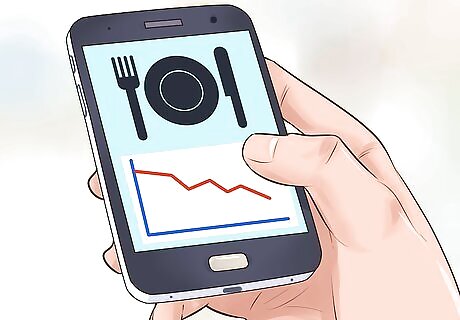
Count calories. Cutting calories and changing your diet is the best method for weight loss. Cutting out about 500 – 750 calories daily is a good place to start when you're trying to lose weight. You'll usually lose about 1 pound per week when you cut out this many calories — possibly 2 pounds if you are able to incorporate some exercise into your week. Start by figuring out how many calories you typically eat on a given day. You can use a food journal app or website to get an semi-accurate idea of what you currently take in. Subtract 500 – 750 calories from this number to get an idea of a weight loss calorie limit for you. Note that it's not a good idea to skip meals or eat too few calories each day. This could result in fatigue, loss of lean muscle mass and nutrient deficiencies. Try not to decrease your calorie intake to less than 1,200 calories daily.

Eat a balanced diet. In addition to monitoring calories, it's also important to focus on a well-balanced diet when you're trying to lose weight. A balanced diet is one that focuses on each of the food groups — grains, protein, dairy, fruits and vegetables. Each food group provides your body with a variety of essential nutrients to perform the vital functions of life. The number of servings you need of each food group daily depends on your age, sex, and activity level. Eat a serving of lean protein at each meal and snack to help meet your minimum daily needs. Eat a fruit or vegetable at each meal and/or try to make each of your meals half fruits and vegetables. In addition to eating enough of certain food groups, a balanced diet also is one that makes sure you don't eat too much of certain types of foods. Items like sweetened beverages, sweetened foods and high fat or greasy processed foods should be limited in your diet.
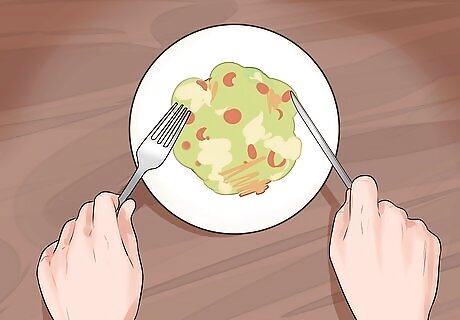
Eat appropriate portion sizes. A calorie-controlled, balanced diet will definitely be key to your weight loss success. Measuring portions will help make this easier. One serving of protein is 3 – 4 oz or about 1/2 cup. One serving of fruits and vegetables are: 1/2 cup of cut fruit, one small fruit (like an apple or pear),1 cup of vegetables, or 2 cups of leafy greens. One serving of grains is 1 oz or 1/2 cup of rice, pasta, or oatmeal; one slice of bread; 1 cup of cereal; or one small tortilla. Also try to make half of your grain choices a whole grains as these foods are higher in fiber and more nutritious.

Limit snacking. You need to be very careful when you snack and you're trying to lose weight. Too much snacking or grazing throughout the day can sabotage your weight loss. If you snack when you're not hungry, snack all day long, or choose higher calorie snack foods, you may not lose weight and you may even gain weight. However, not all snacks are a bad idea. In fact, snacks can help you with weight loss if used appropriately. Snacks are a good idea to help power you up for a workout, to refuel after a workout or get you through a long period of time between meals. Be careful with your snacks. Ensure they do not go over 100 – 150 calories per snack and stick to appropriate portion sizes. The best snacks are mainly lean protein and a fruit or vegetable. For example: carrots and hummus, greek yogurt and raspberries, a hard boiled egg, or 1 oz of mixed nuts.
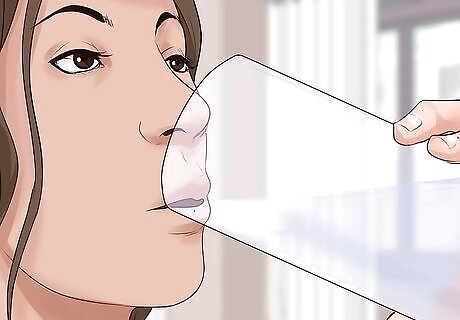
Drink only calorie-free liquids. Drinking a lot of liquid calories throughout the day is another way to easily sabotage your weight loss and even gain weight. Liquid calories go down really easy and many people don't feel full or satisfied after drinking them, so they continue to eat the same amount of calories through foods. Limit calorie-containing beverages as often as you can. Skip regular sodas, fruit juice or fruit juice cocktails, sweetened teas and coffees, sports drinks or energy drinks. Stick to drinking eight to 13 glasses of unsweetened, calorie-free fluids to help maintain your hydration. Water, flavored water, or unsweetened coffee and tea are your best options.
Moving More Throughout the Day
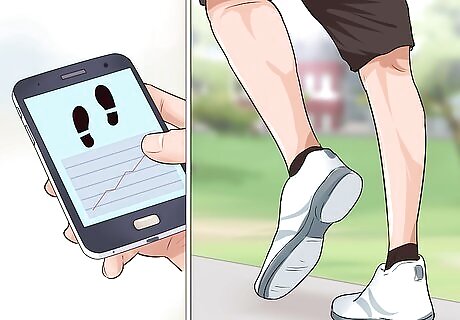
Count your steps. Physical activity has been shown to be very supportive of weight loss, not to mention the many other health benefits that come with being active. Even if you can't spend an hour at the gym, walking more throughout the day, even a small amount, can have a positive effect on your weight loss. You may want to consider purchasing a pedometer or downloading a pedometer app on your smartphone. This can give you an idea of how many steps you currently take each day and give a starting place to add in more steps. Many health professionals recommend that you get about 10,000 steps in (about 5 miles or 8 km) each day. This might not be possible right away but you can start with 5,000 steps per day and add 1,000 steps to your goal each week until you reach 10,000 steps per day. To get in more steps throughout the day, consider: taking a short walk break at lunch, parking farther away, walking to a restroom farther away, taking the stairs instead of the elevator or delivering messages in person instead of email. You can even try: taking multiple trips to bring groceries or other packages inside, taking the stairs multiple times, planning to walk to destinations that are short in distance, walking a lap or two at the mall before you start shopping or walking while you talk on the phone or brush your teeth. EXPERT TIP Laila Ajani Laila Ajani Fitness Trainer Laila Ajani is a Fitness Trainer and founder of Push Personal Fitness, a personal training organization based in the San Francisco Bay Area. With over 10 years as a trainer and exercise specialist, Laila has expertise in competitive athletics (gymnastics, powerlifting, and tennis), personal training, distance running, and Olympic lifting. Laila is certified by the National Strength & Conditioning Association (NSCA), USA Powerlifting (USAPL), and she is a Corrective Exercise Specialist (CES). Laila Ajani Laila Ajani Fitness Trainer Losing weight without regular exercise is possible. To lose weight, you must control your caloric intake. It's a crucial step you can't skip. Ensure that your diet is well-balanced and contains foods that are low in calories and high in nutrition. Additionally, try increasing your daily physical activity to burn more calories.
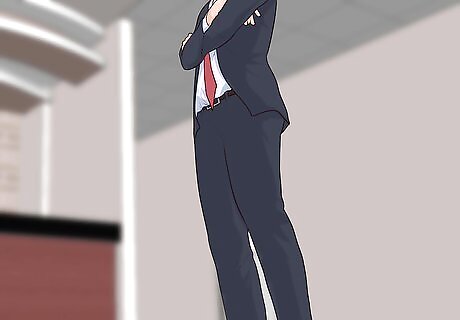
Stand more than you sit. Another way to be more active and help your body burn calories is by trying to stand more often than you sit. Stand at work if you can. Stand during meetings, stand at your desk, or stand while you're on a conference call. At home, stand when you're watching TV or get up and stand or walk around during commercial breaks. Studies have shown that standing helps keep your heart rate elevated and therefore helps your body burn more calories per hour than sitting.
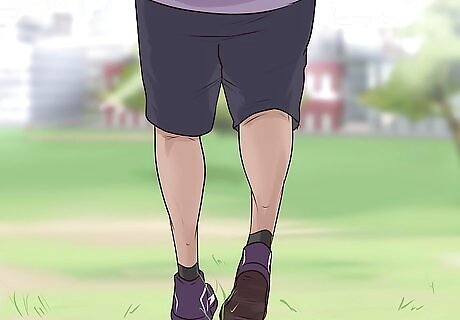
Take a 10 minute break. Although you may not have a lot of time for planned physical activity each day or week, even taking a few minutes every day to be active can help. Try just taking a 10 minute exercise or walk break during the day. Most people have 10 minutes to themselves that they can spend being a little more active. Even if you just go for a leisurely walk to de-stress from a long day, it's still extra activity. There are also many trendy exercises now that focus on getting in a fairly high intensity workout in during just a few minutes, such as high-intensity interval training (HIIT), Orangetheory Fitness (OTF), and barre classes. Some are only 10-15 minutes in length. Also consider doing more exercise on the weekends or your days off. You may be able to get up later or spend more time at the gym. Even if you are only active two days a week, that's still better than nothing.
Managing Your Lifestyle and Weight Loss
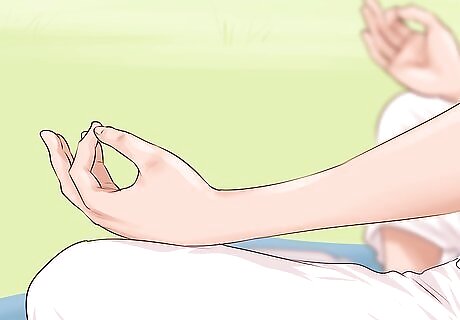
Keep stress at a minimum. If you can't exercise, and you're trying to lose weight, try to manage your stress levels. When you're stressed out, you may have a more difficult losing weight. Stress releases a hormone called cortisol. This may make you feel more hungrier and cause you to crave higher fat, higher sugar or carb-rich foods. Manage stress as best you can. Talk to a friend or family member, listen to music, take a hot shower, read a book or meditate.
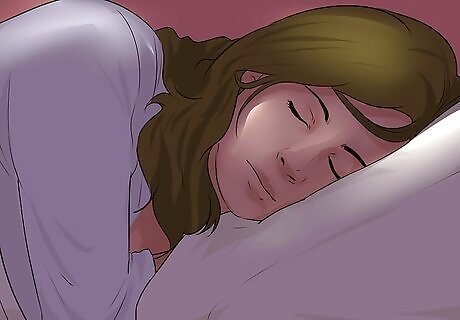
Sleep enough. In addition to managing stress, also make sure you get enough sleep each night. Those who do not sleep enough are typically at a higher body weight than those who do. Like stress, inadequate sleep can make you crave higher fat, higher sugar foods. In addition, it may increase your body's hunger hormone and you'll feel hungrier more throughout the day. Most health professionals suggest getting about seven to nine hours of sleep each night; however, do not sleep more than nine hours often as this is also related to weight gain.
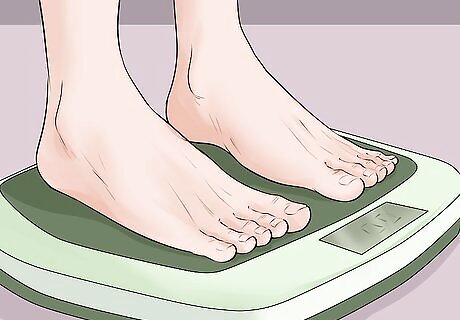
Weigh yourself regularly. Whenever you're trying to lose weight and diet, it's help to weigh yourself regularly. Regular and consistent weigh-ins help keep you motivated, help you stay on track and have also been shown to help you continue to lose weight. Get on the scale one to two times a week, if not every day. This will give you the most accurate trend of your weight loss over time. Also try to weigh yourself at the same time of day and in the same clothing. This also tends to make your weight loss trend more accurate.
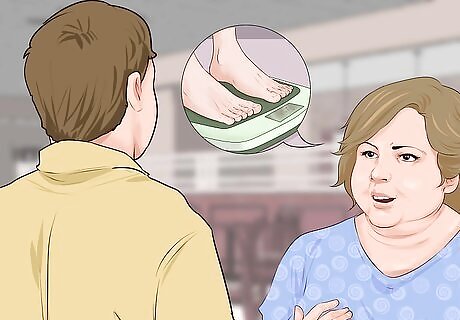
Have accountability. Staying on track can be difficult; however, having some accountability may motivate you to stick to your plan. Weighing yourself daily is a great way to be accountable. If you know you have to get on the scale every morning, you may be more likely to stick to your diet or exercise plan. Try working out with a friend as well. Studies show that scheduling a "workout" date with a friend is something you're not likely to skip. Also try telling friends or family members what your goal is. You can ask them to help you keep accountable and support you with your goals.


















Comments
0 comment